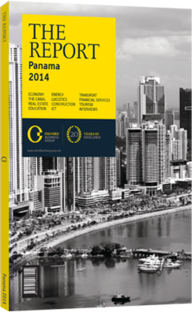OBG talks to Miguel Bolinaga, CEO, AES Panama

Interview: Miguel Bolinaga
Annual energy demand is increasing by 80-100 MW, exceeding supply growth. How can investment in generation be accelerated?
MIGUEL BOLINAGA: Countries like Panama face the challenge of meeting rising power requirements in a timely, reliable and affordable manner. The installed capacity margins have been reduced due to accelerated demand, with annual average growth at 6.5% over the past five years. This can be attributed largely to investments such as the Canal expansion project, Panama’s first metro line, the expansion of Tocumen International Airport, and the growth of both the tourism and construction industries. The delay in new generation projects is another important factor. However, demand for energy is expected to grow at similar rates over the next few years. The authorities must establish regulatory mechanisms guaranteeing reliability in the generation mix. Incentives to install new generation capacity and keep pace with the country’s growth are also crucial.
To what extent will current plans to reinforce and expand the transmission grid prove adequate?
BOLINAGA: The government’s transmission grid expansion plan includes several projects, including the establishment of new lines and substations to transport energy from generation plants, with the goal of eliminating the energy bottleneck in West Panama. We must seize the initiative to revise the requirements that guide investors’ decisions in the transmission system. For instance, the government must work towards transferring transportation costs to the consumer, as is already common in many other countries. In addition, we must also clarify who is responsible for the economic effects caused by restrictions in the transmission grid.
The government has recently scrapped Customs duties and value-added tax on renewable energy equipment. What else should be considered?
BOLINAGA: Incentives to install small renewable energy projects are important. However, these are currently not sufficient to keep pace with growth in demand.
Panama’s priority should be the creation of a stable legal and environmental regulatory framework that allows companies to make the most of hydropower potential.
The best way to attract capital for new projects and encourage reliable energy generation is to allow free competition between different energy technologies. This will also have the effect of reducing costs, as well as improving efficiency throughout the generation mix.
How concerned are you about the possibility that smaller hydropower plants of 20 MW or less might increase the average cost of energy generation?
BOLINAGA: Hydropower projects are always welcome, even smaller-scale ones. At the same time, we must optimise hydrologic basins where small-scale hydropower plants do not always achieve their desired goals.
We must remember that competition between all available technologies will produce the best equation between economic efficiency and the reliability required in a hydrothermal system such as Panama, where the supply capacity is dependent on climatic variables.
This will ensure a balanced and efficient generation mix, and allow Panama to deal with adverse weather conditions as it did last summer, when hydraulic contributions reached their lowest historic levels. The system needs a clear signal to start its expansion.
What kind of measures should the government undertake to strengthen market confidence?
BOLINAGA: Successful management of the energy supply depends in part on avoiding unplanned and unilateral changes, as these invariably undermine market confidence. Attracting sustainable investment depends on the government’s respect for strong commercial regulations, as well as a measure of predictability in any changes to those regulations. A transparent process of consultation during which modifications are thoroughly discussed is also important, as it clarifies the benefits and costs for all the relevant stakeholders.
You have reached the limit of premium articles you can view for free.
Choose from the options below to purchase print or digital editions of our Reports. You can also purchase a website subscription giving you unlimited access to all of our Reports online for 12 months.
If you have already purchased this Report or have a website subscription, please login to continue.

